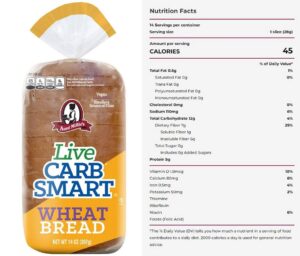7 min read, 1208 words
The Carrot Chronicle 🥕
It’s Easter week, and while the spotlight may be on colored eggs and chocolate bunnies, the real hero of the season is….besides the obvious, of course…THE CARROT. Yes! The ever loved carrot, so much so, Americans consume roughly 2.5 billion pounds of annually. Carrots have a fascinating history, serious nutritional cred and culinary versatility. Read on to give some well-deserved attention to the down-to-earth, crunchy carrot.
A Root with Royal History
Carrots were first cultivated in Persia (modern-day Iran and Afghanistan) as early as the 10th century. These early carrots were not orange as they came in shades of purple and yellow. The orange variety we know today was developed in the Netherlands in the 17th century. The color orange was likely chosen as a tribute to the House of Orange. This royal family, important in Dutch history, helped lead the Netherlands to independence from Spanish rule in the 16th century. The family’s name comes from the principality of Orange in southern France—a small, semi-independent territory that was ruled by a prince. In historical Europe, a principality was a region governed by a prince or princess, often with its own sovereignty or autonomy.
A Name with Nutritional Roots
The word “carrot” comes from the Greek word karoton, which referred to the horn-like shape of the root. Interestingly, the word is also closely linked to “carotenoids,” the group of pigments—including beta-carotene—that give carrots their vivid orange hue and nutritional power.
Crunching the Numbers: U.S. Carrot Consumption
Americans consume roughly 2.5 billion pounds of carrots annually, averaging 8-10 pounds per person per year. They consistently rank among the top ten most popular vegetables in the U.S.
Global Growth and Production
Globally, China leads carrot production, accounting for nearly half of the world’s supply. In the United States, California dominates the market due to its ideal growing conditions. Other significant carrot-producing states include Michigan, Texas, and Florida.
A Colorful Bunch: Carrot Varieties
There are over 40 recognized carrot varieties, ranging in shape, size, and color—including orange, purple, red, yellow, and white. Some are sweeter, while others are earthier or spicier, each with slightly different nutrient profiles.
Leafy Tops: Don’t Toss the Greens!
Carrot greens are edible and nutritious. They contain vitamin K, potassium, antioxidants and other nutrients. They can be used in pestos, soups, or sautéed—but they do have a slightly bitter, earthy flavor that may require balancing with acid or a bit of olive oil.
Orange Baby Noses.
It’s called carotenemia, a harmless condition that occurs when babies (or adults) consume high amounts of beta-carotene from foods like carrots and sweet potatoes. The orange tint often appears around the nose or on the palms and soles but fades once intake is reduced.
Rabbits and Carrots: Myth vs. Reality
While rabbits can eat carrots, they should be an occasional treat, not a dietary staple. Wild rabbits primarily eat grasses and leafy greens. Too much carrot isn’t ideal for a rabbit health.
Nutritional Powerhouse: The Carrot.
More than just a crunchy snack. One medium raw carrot (about 61 grams) delivers an impressive nutritional punch:
- Vitamin A: ~10,190 IU
- Beta Carotene: ~5053.85 µg
- Fiber: ~1.71 grams
- Vitamin K1: ~8 micrograms (mcg)
- Potassium: ~195 milligrams (mg)
- Calcium: ~20 (mg)
- Antioxidants: A variety, including lycopene, lutein and zeaxanthin (amounts vary depending on variety and growing conditions)
- Calories: 25
Beta-Carotene vs. Vitamin A
Beta-carotene is a provitamin A carotenoid, which means it’s a plant-based compound that the body converts into vitamin A as needed. Unlike vitamin A (retinol, found in animal sources), beta-carotene is considered safer because the body regulates how much it converts—lowering the risk of toxicity.
A medium carrot can provide over 200% of your daily vitamin A needs in the form of beta-carotene. However, it’s important to note that not all beta-carotene is converted to vitamin A at a 1:1 ratio. For every 12 micrograms of dietary beta-carotene, the body typically converts 1 microgram into usable vitamin A, depending on factors like genetics, gut health, and overall nutrient intake.
How Carrots Nourish Your Body:
- Eye Health: Supports night vision and eye health by forming rhodopsin, a light-sensitive protein. Lutein and zeaxanthin filter harmful blue light.
- Skin Health: Encourages cell turnover and repair, protects against UV damage, and neutralizes skin-aging free radicals.
- Immunity: Maintains mucosal barriers and supports white blood cell production.
- Heart Health: Potassium balances sodium and supports blood pressure; fiber helps manage cholesterol; antioxidants reduce inflammation.
- Reduce the Risk of Cancer, ie prostate, colon, stomach and possibly breast cancer.
- Weight loss. Low in calorie, high fiber, help increase the sense of satiety.
Be Creative with Carrots
Carrots are incredibly versatile. Beyond snacking and soups, here are fun and functional ways to include more carrots in your meals:
- Grated into meatloaf or burger patties for added moisture and nutrients
- Shredded on top of tacos for a pop of crunch and color
- Curled into ribbons with a vegetable peeler, top grain bowls or spring salads
- Pureed into smoothies for a natural sweetness and beta-carotene boost
- Sliced into slivers for stir-fry or veggie wraps
- Raw carrot sticks, served with PB2 or hummus
- Roasted and mashed with garlic as an alternative to mashed potatoes
- Sauté whole carrots with a drizzle of olive oil and a sprinkle of sea salt for a simple side—or try them with a drizzle of honey and butter
Root to Recipe: Carrot Creations
- Carrot Ginger Soup. Silky, immune-boosting, and comforting. Combine sautéed onions, garlic, fresh ginger, chopped carrots, and low-sodium vegetable broth. Simmer until soft, blend (with immersion blender) until smooth, and finish with a touch of coconut milk and black pepper.
- Maple-Roasted Rainbow Carrots. A colorful, naturally sweet side dish. Toss carrots with olive oil, a drizzle of maple syrup, salt, and thyme. Roast at 400°F for 30–35 minutes until caramelized and tender. Finish with a splash of apple cider vinegar for contrast.
- Carrot Top Pesto Don’t toss the greens! Blend carrot tops with garlic, lemon juice, walnuts, parmesan (or nutritional yeast), and olive oil. Perfect for drizzling over roasted veggies, grain bowls, or grilled chicken.
Carrot Gardening 101- Grow your own!
The Quick Guide To A Beginners Crop of Carrots:
- Choose loose, well-drained soil free of rocks and debris
- Sow seeds ¼ inch deep in rows spaced 1 foot apart
- Keep soil consistently moist (not soggy)
- Thin seedlings to about 2 inches apart once they sprout
- Harvest when roots reach ½ to 1 inch in diameter, usually in 70–80 days Homegrown carrots tend to be sweeter and more flavorful than store-bought varieties
The Crunchy Conclusion
Carrots may wear the crown of Easter cuteness, but they’re a serious contender for nutrition royalty. Loaded with beta-carotene, potassium, fiber, and powerful antioxidants, they support everything from sharp vision and glowing skin to a strong immune system and heart health.
Whether raw, roasted, or blended into soups and sauces, carrots are as versatile as they are beneficial. Let carrots hop on your plate for vibrant flavor, natural color, and a rich dose of Beta-Carotene.
Happy Easter
– Coach Marie 🥦







